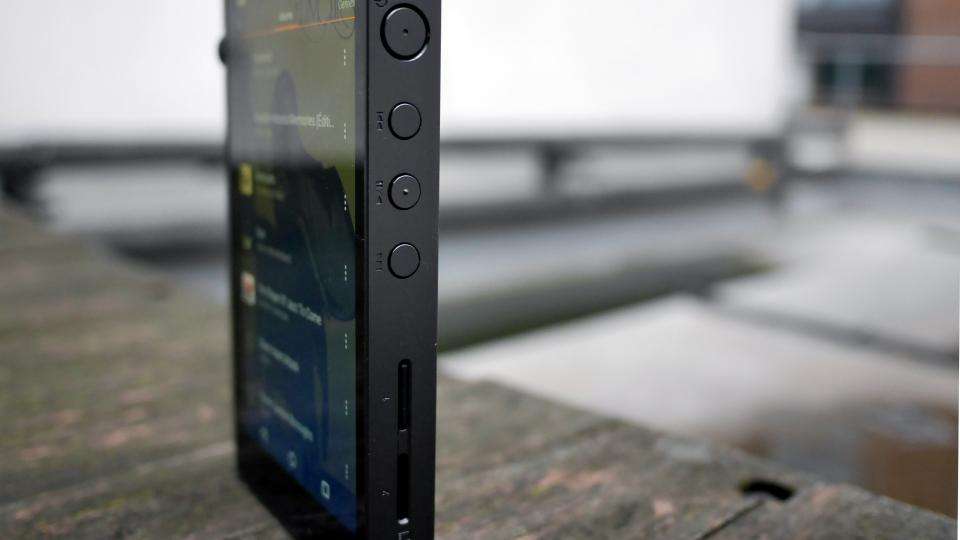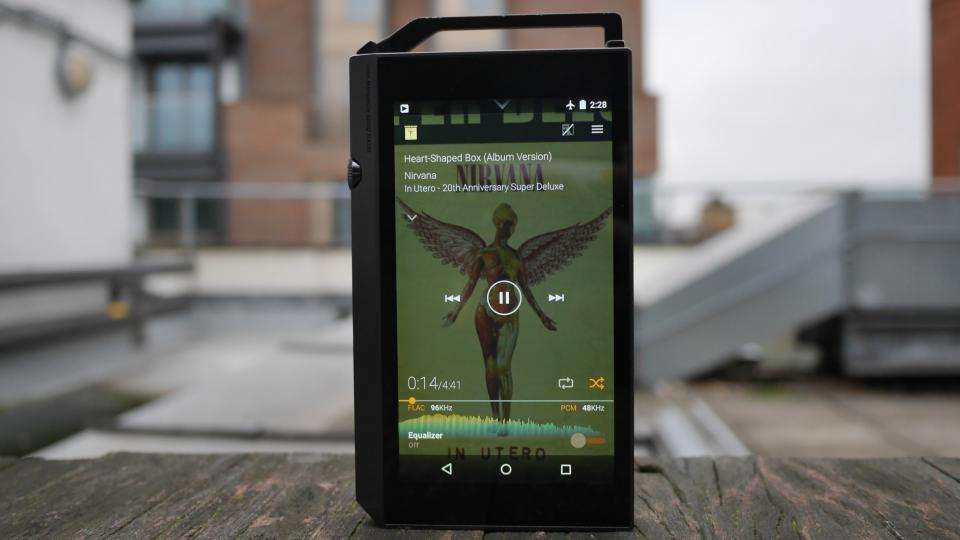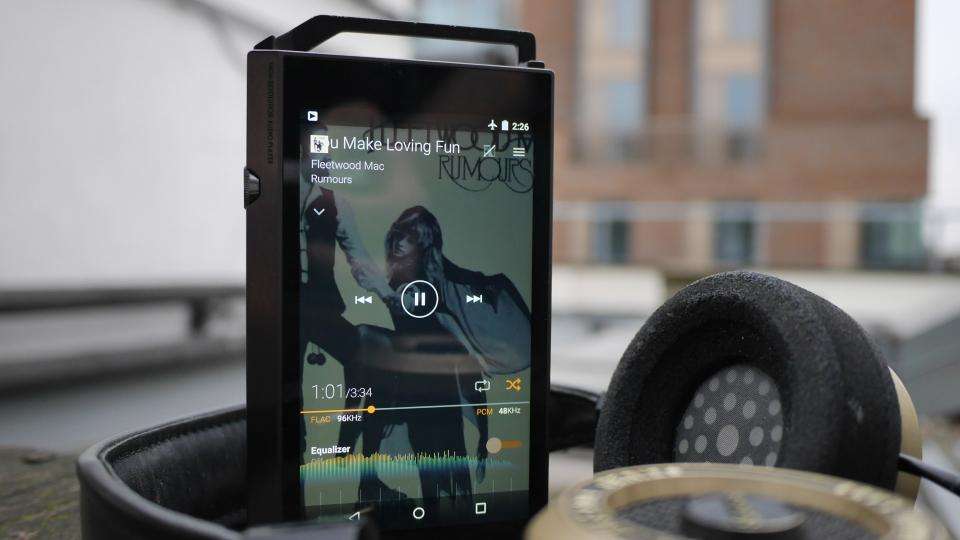Sound quality has been on a downward spiral ever since CDs gave way to MP3s. Smartphones are now the de facto standard for listening on the move, and streaming services haven’t helped matters either. There’s still consumer demand for high quality audio, but few phones can play back Hi-Res FLAC and DSD files, and even the ones that can use DACs that share space on the circuit board with other components, which can lead to interference.
Pioneer’s XDP-100R was designed to tackle these limitations.
DESIGN
It’s a high-end, Android-powered portable media player that eschews superfluous extras like a rear camera (we’re looking at you, most recent iPod ) and splits its internal circuitry into two; one PCB contains the CPU, sensors, wireless chips and display controller, while the other is dedicated to the ESS SABRE DAC and amplifier. With its Stand-alone mode enabled, Wi-Fi, Bluetooth and the display are disabled to cut out all electromagnetic signals besides audio, ensuring nothing interferes with playback.
This incredible attention to detail also translates to the premium materials used to build the device. It’s sculpted from aluminium, with a removable bumper on the top edge to help protect the 3.5mm jack from undue stress that could damage your headphones. Yes, it’s chunkier than your typical smartphone, with odd angular but it’s still easy enough to grip in one hand, and the power, play and skip track buttons are all sensibly placed within easy reach of your fingers.

There are two microSD card slots directly below the playback buttons, for a potential maximum capacity of 256GB, plus the 32GB of on-board storage. This is especially important for Hi-Res files, which can be hundreds of megabytes per track; it gives the XDP-100R a huge advantage over media players that rely entirely on internal storage.
The oversized volume dial is an especially nice touch, replicating a more familiar Hi-Fi knob on a portable device. Initially, placing it in a pocket could accidentally change the volume, but a quick trip into the Settings menu locked volume whenever the screen is switched off.
DISPLAY & ANDROID PERFORMANCE
That display isn’t quite up to the same standard as the rest of the unit, but we’re inclined to forgive the 4.7in, 1,280x720 resolution panel when it’s primary function is displaying your music library’s album art. It’s surprisingly bright at 417cd/m2, and a contrast ratio of 966:1 isn’t exactly bad either, but high peak black levels of 0.43cd/m2 and a meagre 86.7% sRGB colour gamut coverage aren’t that impressive at all. When mid-range smartphones like the OnePlus 2 have better quality, higher resolution displays, it’s a disappointment to see 720p in a £500 media player.
It would have been easy for Pioneer to skimp on the internals as well, audio circuitry aside, but happily the XDP-100R is well equipped. Qualcomm’s Snapdragon 800 might not be cutting edge any more, but it still runs at 2.2GHz and has an Adreno 330 GPU backing it up. Geekbench single- and multi-core scores of 885 and 2794 are still very respectable, as is a Peacekeeper browser benchmark score of 827. Essentially, this is a media player on par with a Google Nexus 5 smartphone. This translates to very snappy performance in Android 5.0.1 Lollipop.

Pioneer hasn’t altered the default Lollipop UI very much, only swapping the standard Music app for its own, tweaking the colour scheme and adding a few extra widgets to the home screen. It helps keep things feeling responsive, and instantly recognisable for anyone that’s familiar with Android. You also have the benefit of having access to the Play Store, meaning you can add any music streaming service you like – not just the pre-installed Onkyo Music or Tidal.
You can easily play games, too, as GFXBench GL Manhattan scores of 1,578 (or 25fps) and 697 (or 11fps) in the onscreen and off-screen tests respectively show. It admittedly took quite a while to open up Blizzard’s Hearthstone, but once it had loaded battle animations were consistently smooth.
Battery life is more than respectable for a media player, too. In everyday use we’ve easily squeezed out ten hours of 24bit/96kHz audio playback, and around sixteen with MP3 tracks. You’ll easily get through a whole day of listening and still have charge when you get home in the evening. The micro USB charging port also acts as a USB OTG digital output, so you can use the XDP-100R with an external digital amplifier.


Leave a Reply